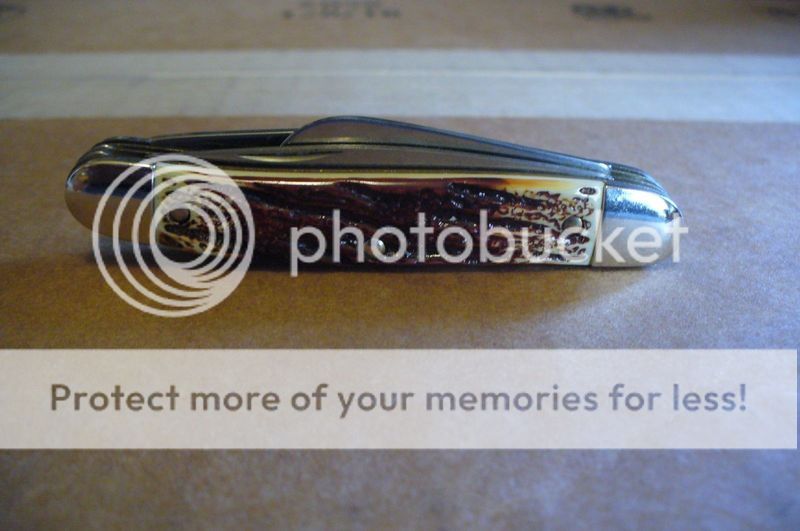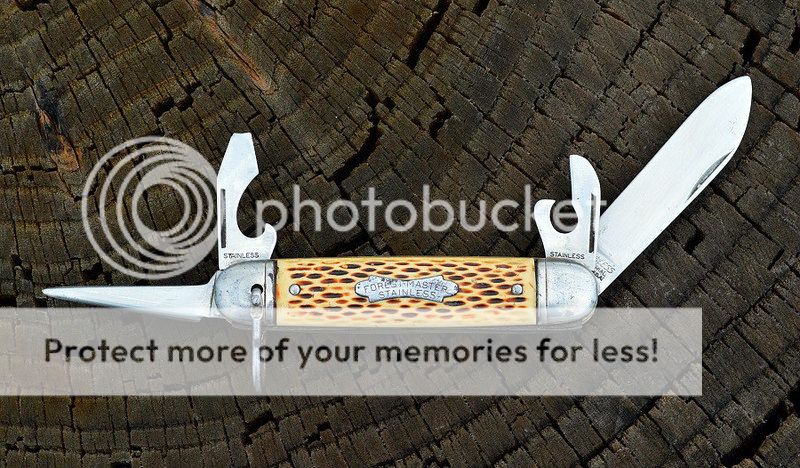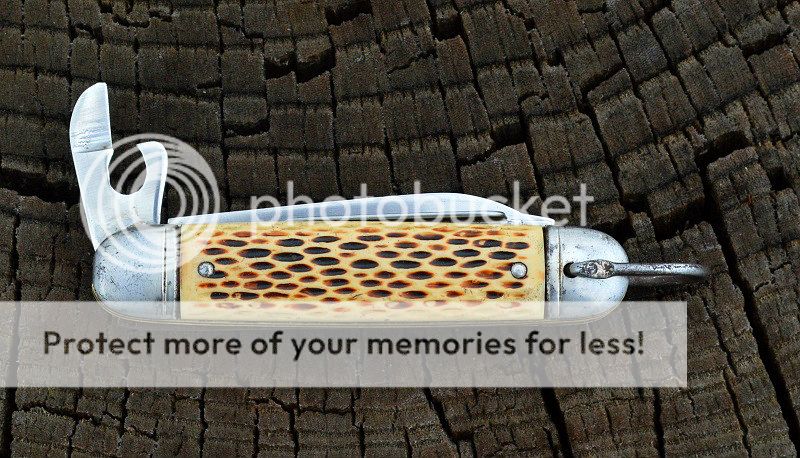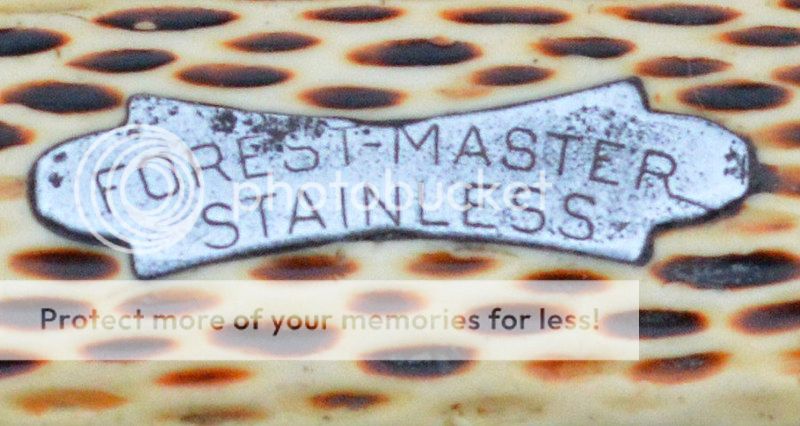First of all, a great thank you and hello to B. Mauser, who has proven to be a valuable resource and wellspring of knowledge about Colonial knives (have I seen you post before in AAPK?). Reading through this thread last night and today got me hyped up about the oft put-upon maker, who really does have a pretty storied history in cutlery and probably doesn't get nearly enough credit for contributions to the industry and the collecting hobby. Welcome and great job, B.! I am still reading through your blog but there is some fantastic stuff there. :thumbup:
I don't have a large collection of Colonials by any metric, but the ones I have are treasured parts of my collection regardless of any value or lack thereof. I have also made a habit of trying to grab the "imprint" Colonials like Ranger, Old Cutler, et al. and knives I suspect were contracted to Colonial. I took advantage of the dying light today after getting home and took some snapshots of my humble little hoard. Images should all be clickable to full-size, though some might not be as sharp as I'd like.
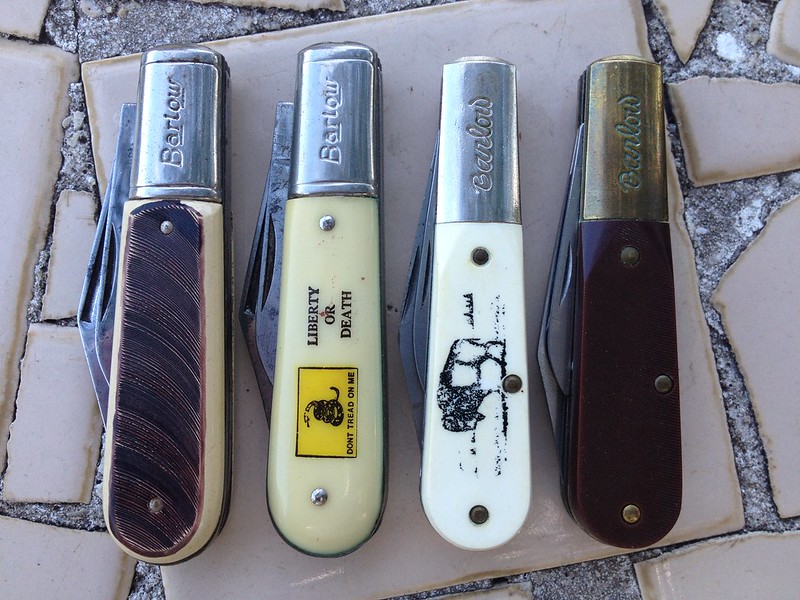

First up, the ubiquitous Colonial Barlow. Colonial had a few "tiers" of Barlow over their history. The slightly larger, more rounded Barlows were mosty used for advertisement. The maroon Barlow is a "Durango" imprint (model D222) built by Colonial, I believe the Durangos were meant to be a more upmarket brand a la Ranger. Oddly enough, Colonial tended to cut long pulls on their downmarket/advertising Barlows and nail nicks on the "retail" ones.
I've seen a number of those Bicentennial Colonial Barlows in this forum, I imagine they were pretty popular. I picked mine up because 1976 was my year of birth.
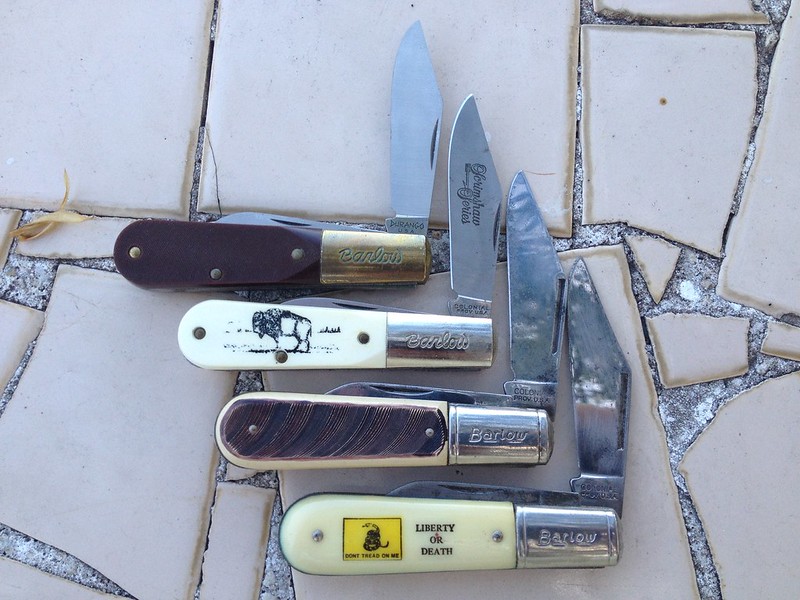
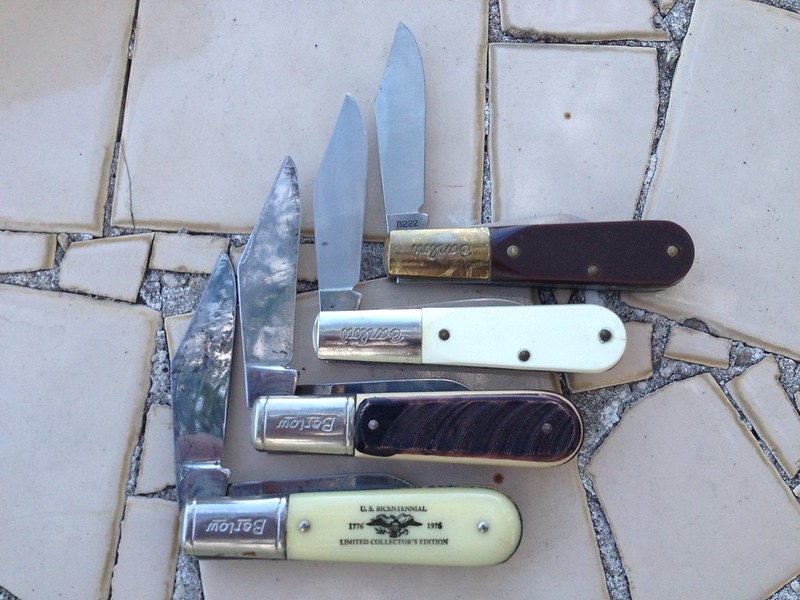
The kick on the Durango's pen blade is noticeably higher than the one on the matching Colonial; it's an odd difference and it makes the pen ride up high enough to make pulling the master a bit of a pain.
I don't have any granddaddy Barlows from Colonial as of yet but I continue to hunt for clean ones.

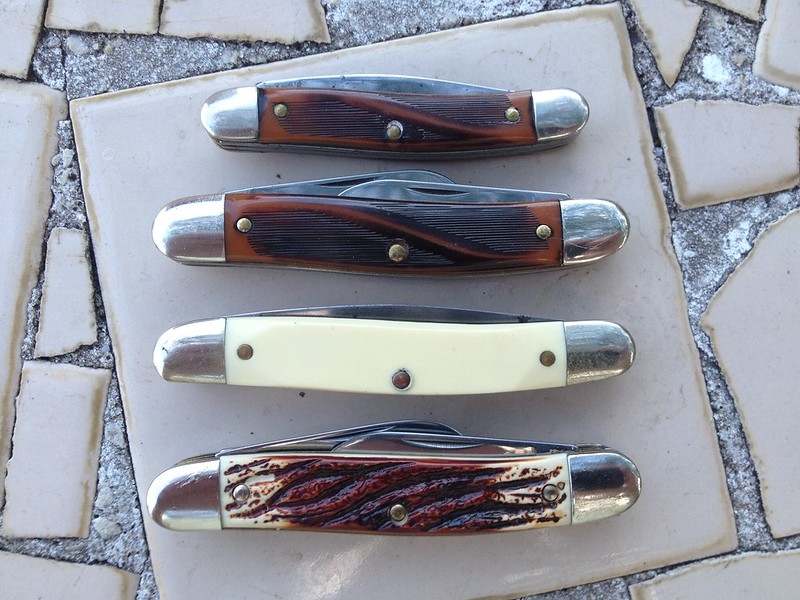
I have a couple Anvils -- a medium stockman and small serpentine jack -- to go with this Old Cutler jack (#421) that appears to be built on the same frame and with the same machining as the bigger Anvil. I suspect that another bargain acquisition of mine, this grooved Delrin Sharp USA #470, was a contract Colonial build; I have a number of Japanese Sharp-branded knives but this is my only USA-stamped one to date.

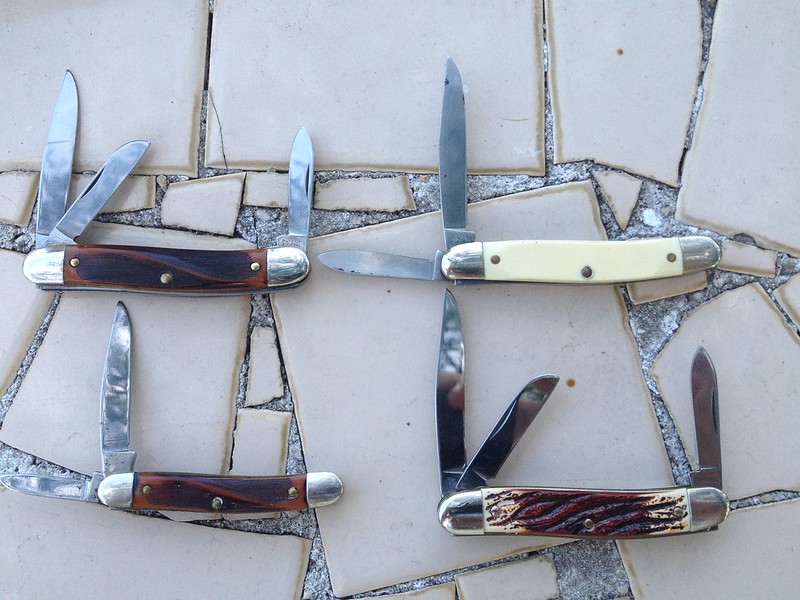
The cut and grind of the Turkish clips are all very, very similar. The pen blades on the larger knives are somewhat unique and flange out ever so slightly towards the end. I couldn't get a clean photo of one knife overlaying another but they sure did line up to the naked eye.
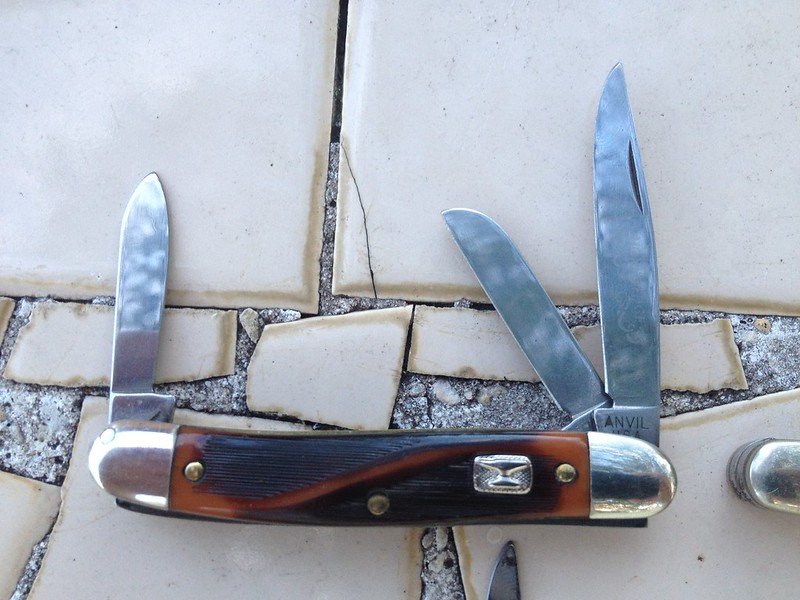

I'm kicking myself right now because for all the photos I took racing against twilight I forgot to take a photo of the knives from the top or bottom. The Sharp USA is actually a 3-spring while the Anvil is 2-spring, but the springs line up perfectly on each end. That pen becomes a real nailbreaker when the sheepsfoot is already open on the Anvil!
As BL is so fond of saying, you have to read the knife. My read of these knives is that they were all produced by the same company.
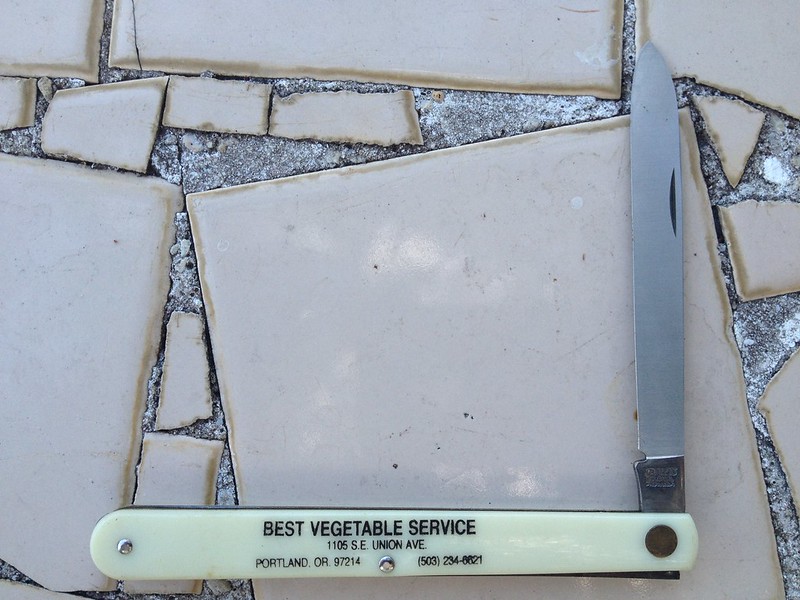
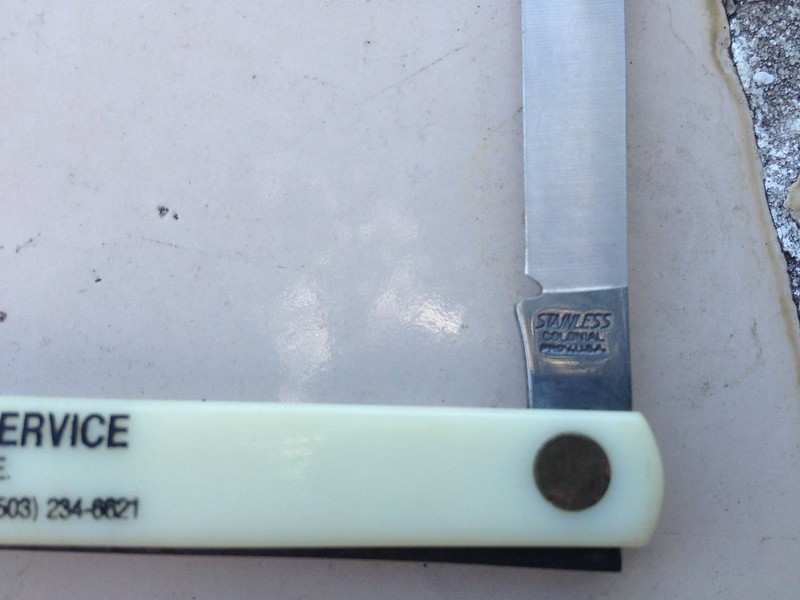
Glenn's sweet Cryovac fruit knife made me think of the only one I have. It's kinda plain in comparison but it's clean and solidly built. It's obviously not an idea choice for EDC in terms of size alone but it's a cool little knife anyway. I missed out on a chance for a serrated Colonial a few months back, sadly.
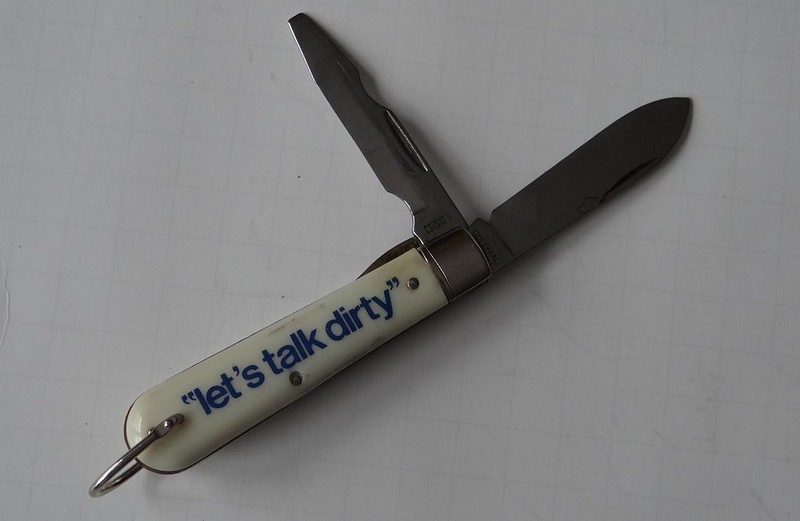

As a big fan of the TL-29/linesman's knife pattern, I was aghast to discover today that my only Colonial example appears to be lost! I know it's somewhere in the morass, but after a good while of searching through my linesman's knives and anywhere else I could think of, I came up empty. These are old photos. Aside from my affinity for the pattern, the advertising motto was a primary driver in snapping this one up.
I know it's somewhere in the morass, but after a good while of searching through my linesman's knives and anywhere else I could think of, I came up empty. These are old photos. Aside from my affinity for the pattern, the advertising motto was a primary driver in snapping this one up. 
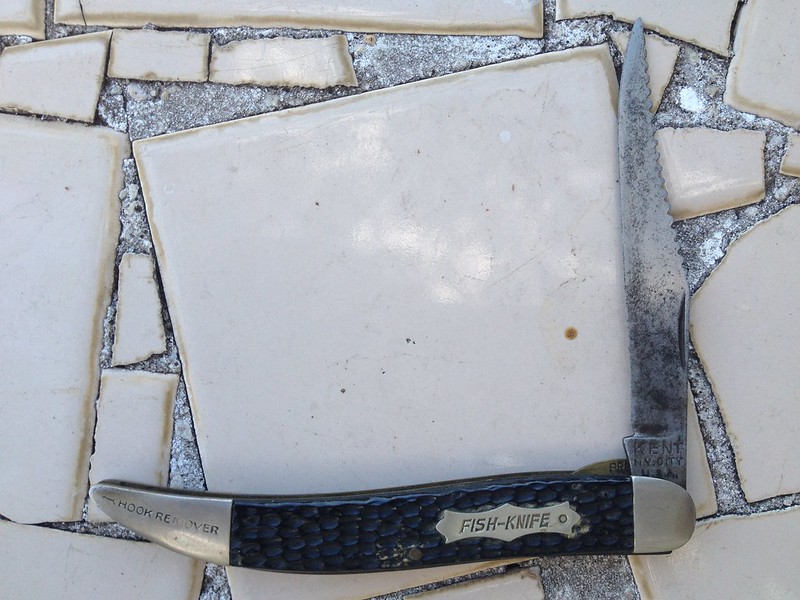

Using Science(tm) to closely compare the Colonial fish knife B. posted at the beginning of the thread, I am starting to suspect this Kent fish knife is also a Colonial build. While the angle of the photo obscures any liner lock on his knife, I imagine that's just one option the factory could have added or subtracted at their whim (or the whims of those who contracted them). The placement of the "hook remover" stamp is different but it appears the curve of the lettering and the orientation of the font in relation to the arrow is identical. Again, my "read" on these knives indicates they were both produced by the same people.
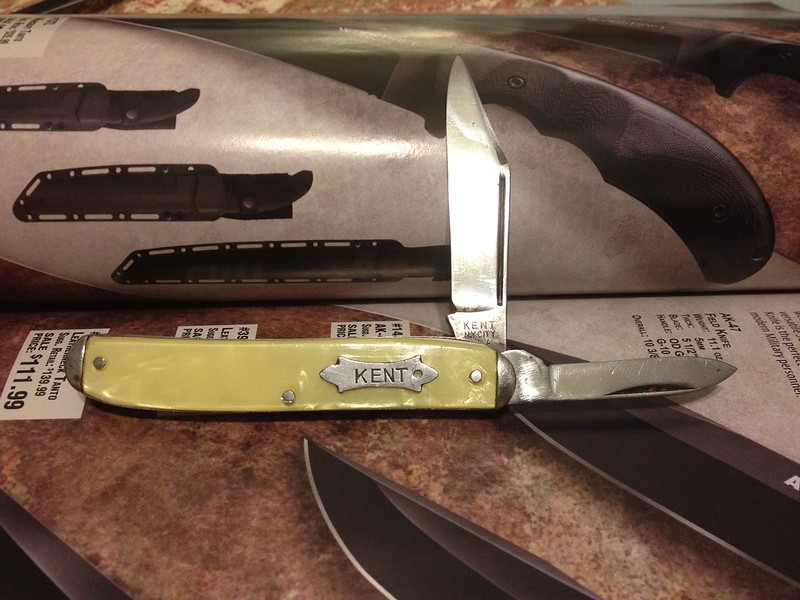
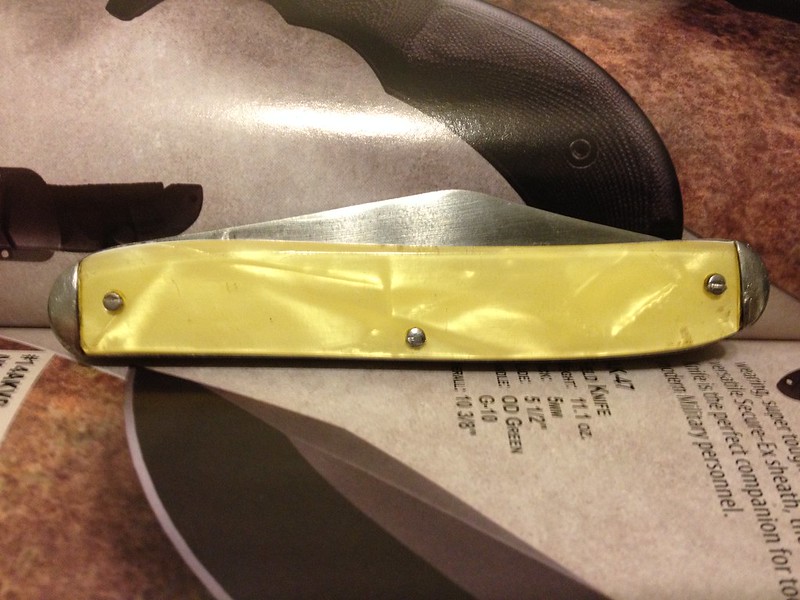
This Kent jack I photographed earlier this week has a similar (but not identical) tang stamp to the fish knife above, and I'd guesstimate the age of both to be reasonably close to the era B. was talking about in his first post. I am significantly less certain of this supposition, but I think there's a good chance this Kent is also an earlier Colonial build.
I look forward to seeing and reading more about everybody's Colonials!
I don't have a large collection of Colonials by any metric, but the ones I have are treasured parts of my collection regardless of any value or lack thereof. I have also made a habit of trying to grab the "imprint" Colonials like Ranger, Old Cutler, et al. and knives I suspect were contracted to Colonial. I took advantage of the dying light today after getting home and took some snapshots of my humble little hoard. Images should all be clickable to full-size, though some might not be as sharp as I'd like.


First up, the ubiquitous Colonial Barlow. Colonial had a few "tiers" of Barlow over their history. The slightly larger, more rounded Barlows were mosty used for advertisement. The maroon Barlow is a "Durango" imprint (model D222) built by Colonial, I believe the Durangos were meant to be a more upmarket brand a la Ranger. Oddly enough, Colonial tended to cut long pulls on their downmarket/advertising Barlows and nail nicks on the "retail" ones.
I've seen a number of those Bicentennial Colonial Barlows in this forum, I imagine they were pretty popular. I picked mine up because 1976 was my year of birth.


The kick on the Durango's pen blade is noticeably higher than the one on the matching Colonial; it's an odd difference and it makes the pen ride up high enough to make pulling the master a bit of a pain.
I don't have any granddaddy Barlows from Colonial as of yet but I continue to hunt for clean ones.


I have a couple Anvils -- a medium stockman and small serpentine jack -- to go with this Old Cutler jack (#421) that appears to be built on the same frame and with the same machining as the bigger Anvil. I suspect that another bargain acquisition of mine, this grooved Delrin Sharp USA #470, was a contract Colonial build; I have a number of Japanese Sharp-branded knives but this is my only USA-stamped one to date.


The cut and grind of the Turkish clips are all very, very similar. The pen blades on the larger knives are somewhat unique and flange out ever so slightly towards the end. I couldn't get a clean photo of one knife overlaying another but they sure did line up to the naked eye.


I'm kicking myself right now because for all the photos I took racing against twilight I forgot to take a photo of the knives from the top or bottom. The Sharp USA is actually a 3-spring while the Anvil is 2-spring, but the springs line up perfectly on each end. That pen becomes a real nailbreaker when the sheepsfoot is already open on the Anvil!
As BL is so fond of saying, you have to read the knife. My read of these knives is that they were all produced by the same company.


Glenn's sweet Cryovac fruit knife made me think of the only one I have. It's kinda plain in comparison but it's clean and solidly built. It's obviously not an idea choice for EDC in terms of size alone but it's a cool little knife anyway. I missed out on a chance for a serrated Colonial a few months back, sadly.


As a big fan of the TL-29/linesman's knife pattern, I was aghast to discover today that my only Colonial example appears to be lost!


Using Science(tm) to closely compare the Colonial fish knife B. posted at the beginning of the thread, I am starting to suspect this Kent fish knife is also a Colonial build. While the angle of the photo obscures any liner lock on his knife, I imagine that's just one option the factory could have added or subtracted at their whim (or the whims of those who contracted them). The placement of the "hook remover" stamp is different but it appears the curve of the lettering and the orientation of the font in relation to the arrow is identical. Again, my "read" on these knives indicates they were both produced by the same people.


This Kent jack I photographed earlier this week has a similar (but not identical) tang stamp to the fish knife above, and I'd guesstimate the age of both to be reasonably close to the era B. was talking about in his first post. I am significantly less certain of this supposition, but I think there's a good chance this Kent is also an earlier Colonial build.
I look forward to seeing and reading more about everybody's Colonials!



